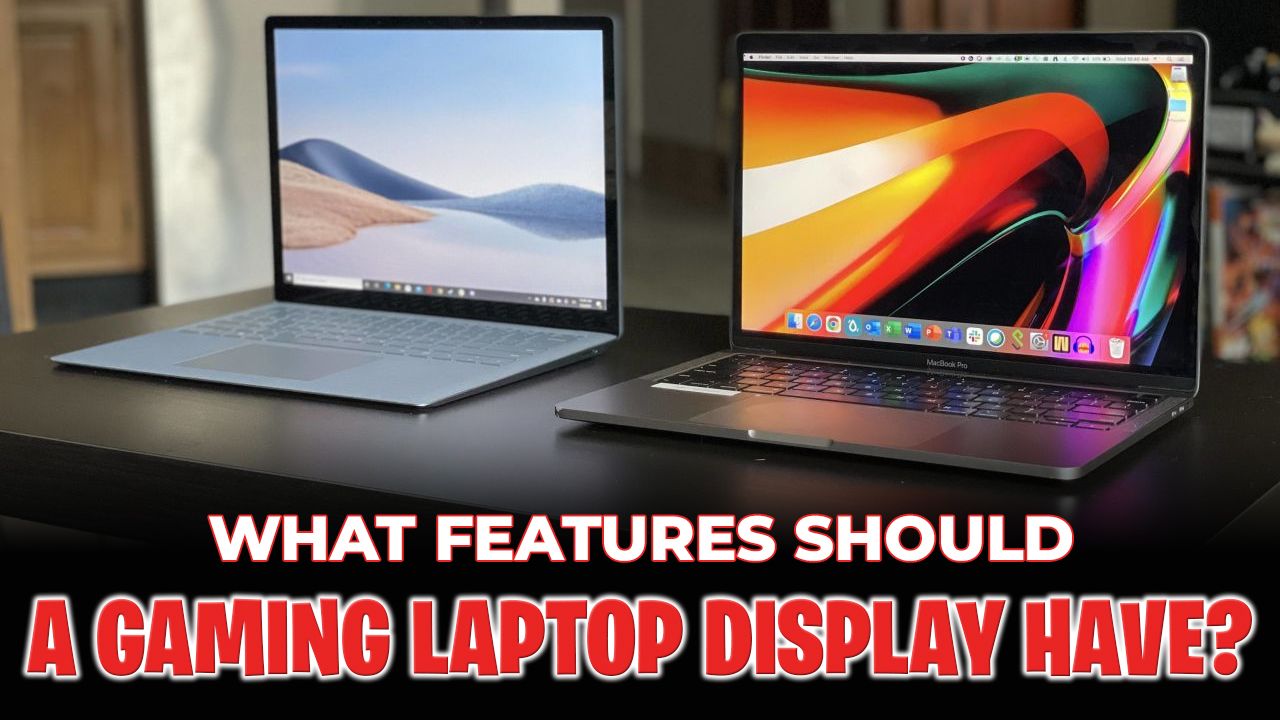What Features Should a Gaming Laptop Display Have?

A gaming laptop's display is one of the most important components that can make or break your gaming experience. There are several factors to consider when looking for a gaming laptop display, including resolution, refresh rate, response time, and panel type.
Factors to Consider When Looking for a Gaming Laptop Display
Firstly, resolution refers to the number of pixels on the screen. The image will be clearer and more detailed with a greater resolution. Most gaming laptops come with either 1080p (Full HD) or 1440p (Quad HD) displays. However, some high-end models offer 4K (Ultra HD) displays for even more immersive visuals.
Secondly, refresh rate refers to how many times per second the display can update the image. The higher the refresh rate, the smoother and more fluid the gameplay will be. Most gaming laptops come with a refresh rate of 60Hz or 120Hz, but some high-end models offer 144Hz or even 240Hz displays.
Thirdly, response time refers to how quickly each pixel can change from one color to another. A lower response time means less motion blur and ghosting during fast-paced gameplay. Most gaming laptops have a response time of 5ms or less.
Lastly, panel type refers to the technology used to create the display. There are three primary types: IPS (in-plane switching), VA (vertical alignment), and TN (twisted nematic). TN panels are known for their fast response times but poor color accuracy and viewing angles. IPS panels have slower response times but improved color accuracy and wider viewing angles. Although VA panels have great contrast ratios and deep blacks, they can ghost. In addition to the factors I mentioned earlier, there are a few other things to keep in mind when choosing a gaming laptop display. One of these is screen size. Most gaming laptops have displays that range from 15 to 17 inches, with some models going up to 18 inches or more. A larger screen can provide a more immersive gaming experience, but it also means a heavier and bulkier laptop.
Another consideration is the color gamut. This refers to the range of colors that a display can reproduce. A wider color gamut can make games look more vibrant and lifelike, but it's not always necessary for gaming. If you plan on doing any photo or video editing on your laptop, however, a wider color gamut may be important.
It's also worth noting that some gaming laptops offer G-Sync or FreeSync technology. These are proprietary technologies developed by Nvidia and AMD, respectively, that synchronize the refresh rate of the display with the frame rate of the game being played. This can eliminate screen tearing and stuttering for a smoother gaming experience.
Finally, it's important to consider your budget when choosing a gaming laptop display. Higher-end displays with features like high refresh rates and G-Sync/FreeSync tend to be more expensive. However, if you're serious about gaming and want the best possible experience, investing in a high-quality display can be well worth it.
Certainly! Here are a few more things to consider when choosing a gaming laptop display: Brightness:
A brighter display can make games look more vivid and can be helpful if you plan on gaming in well-lit environments. Look for a laptop with a brightness of at least 250 nits. Viewing angles:
If you plan on gaming with friends or family, a display with wide viewing angles can ensure that everyone can see the action. The wide viewing angles of IPS screens are well known.
Touchscreen:
Some gaming laptops come with touchscreens, which can be useful for certain games or for navigating Windows 10. However, touchscreens tend to add weight and cost to a laptop, so they may not be necessary for everyone.
Matte vs. glossy:
Matte displays have an anti-glare coating that can reduce reflections and make it easier to see the screen in bright environments. Glossy displays, on the other hand, tend to have more vibrant colors and deeper blacks. Most of your choice will depend on personal preference.
Bezels:
The bezel is the frame around the edge of the display. Some gamers prefer laptops with thin bezels, as they can provide a more immersive experience. However, thin bezels can also make it harder to grip the laptop when carrying it around.
Conclusion:
In summary, when looking for a gaming laptop display, you should prioritize a high resolution, high refresh rate, and low response time, and choose a panel type that suits your needs based on your preferences for color accuracy and viewing angles.

